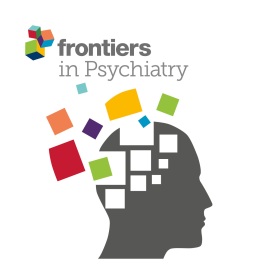“Spasticity is one of the most common symptoms in people with multiple sclerosis (MS). Conventional anti-spasticity agents have limitations in their efficacy and tolerability.
Delta-9-tetrahydrocannabinol: cannabidiol (THC:CBD) spray, a cannabinoid-based medicine, is approved as an add-on therapy for MS spasticity not adequately controlled by other anti-spasticity medications. The results from randomized controlled trials (RCTs) have demonstrated a reduction in the severity of spasticity and associated symptoms. However, RCTs do not always reflect real-life outcomes. We systematically reviewed the complementary evidence from non-interventional real-world studies.
METHODS:
A systematic literature review was conducted to identify all non-RCT publications on THC:CBD spray between 2011 and 2017. Data on study design, patient characteristics, effectiveness, and safety outcomes were extracted from those publications meeting our inclusion criteria.
RESULTS:
In total, we reviewed 14 real-world publications including observational studies and treatment registries. The proportion of patients reaching the threshold of minimal clinical important difference (MCID), with at least a 20% reduction of the spasticity Numeric Rating Scale (NRS) score after 4 weeks ranged from 41.9% to 82.9%. The reduction in the mean NRS spasticity score after 4 weeks was maintained over 6-12 months. The average daily dose was five to six sprays. Delta-9-tetrahydrocannabinol: cannabidiol was well tolerated in the evaluated studies in the same way as in the RCTs. No new or unexpected adverse events or safety signals were reported in everyday clinical practice.
CONCLUSIONS:
The data evaluated in this systematic review provide evidence for the efficacy and safety of THC:CBD in clinical practice and confirm results obtained in RCTs.”


 “Diseases affecting the central nervous system (CNS) should be regarded as a major health challenge due to the current lack of effective treatments given the hindrance to brain drug delivery imposed by the blood-brain barrier (BBB). Since efficient brain drug delivery should not solely rely on passive targeting, active targeting of nanomedicines into the CNS is being explored. The present study is devoted to the development of lipid nanocapsules (LNCs) decorated with non-psychotropic cannabinoids as pioneering non-immunogenic brain targeting molecules and to the evaluation of their brain targeting ability both in vitro and in vivo. Noticeably, both the permeability experiments across the hCMEC/D3 cell-based in vitro BBB model and the biodistribution experiments in mice consistently demonstrated that the highest brain targeting ability was achieved with the smallest-sized cannabinoid-decorated LNCs. Importantly, the enhancement in brain targeting achieved with the conjugation of CBD to LNCs outperformed by 6-fold the enhancement observed for the G-Technology® (the main brain active strategy that has already entered clinical trials for the treatment of CNS diseases) As the transport efficiency across the BBB certainly determines the efficacy of the treatments for brain disorders, small cannabinoid-decorated LNCs represent auspicious platforms for the design and development of novel therapies for CNS diseases.”
“Diseases affecting the central nervous system (CNS) should be regarded as a major health challenge due to the current lack of effective treatments given the hindrance to brain drug delivery imposed by the blood-brain barrier (BBB). Since efficient brain drug delivery should not solely rely on passive targeting, active targeting of nanomedicines into the CNS is being explored. The present study is devoted to the development of lipid nanocapsules (LNCs) decorated with non-psychotropic cannabinoids as pioneering non-immunogenic brain targeting molecules and to the evaluation of their brain targeting ability both in vitro and in vivo. Noticeably, both the permeability experiments across the hCMEC/D3 cell-based in vitro BBB model and the biodistribution experiments in mice consistently demonstrated that the highest brain targeting ability was achieved with the smallest-sized cannabinoid-decorated LNCs. Importantly, the enhancement in brain targeting achieved with the conjugation of CBD to LNCs outperformed by 6-fold the enhancement observed for the G-Technology® (the main brain active strategy that has already entered clinical trials for the treatment of CNS diseases) As the transport efficiency across the BBB certainly determines the efficacy of the treatments for brain disorders, small cannabinoid-decorated LNCs represent auspicious platforms for the design and development of novel therapies for CNS diseases.”



 “Substance use disorder is characterized by repeated use of a substance, leading to clinically significant distress, making it a serious public health concern. The endocannabinoid system plays an important role in common neurobiological processes underlying substance use disorder, in particular by mediating the rewarding and motivational effects of substances and substance-related cues. In turn, a number of
“Substance use disorder is characterized by repeated use of a substance, leading to clinically significant distress, making it a serious public health concern. The endocannabinoid system plays an important role in common neurobiological processes underlying substance use disorder, in particular by mediating the rewarding and motivational effects of substances and substance-related cues. In turn, a number of 
